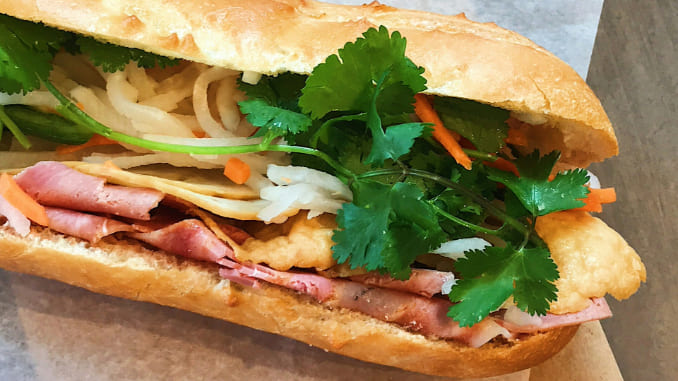The Beach Sandwich: An Anatomy
Photo by Amy Tran/Unsplash
Next week in Boston, temperatures will finally surpass 80 degrees Fahrenheit, which is, for me, the cutoff for beach weather. At 75 degrees, the wind whipping off the water still feels a bit too chilly to truly enjoy, even if that’s the ideal temperature in the city. Once it hits 80, the summer has officially begun, even if the summer solstice is still weeks away.
Though the beaches in Boston may be a far cry from the sandy, idyllic beaches of somewhere like Puerto Rico or even Florida, they do the trick when you want a day with your toes in the sand, the sun beating down on your head and a bottle of slightly too-warm beer in your hand. But no beach trip, regardless of location, is ever complete without a full meal to keep you satisfied as you lounge.
There are plenty of easy-to-eat dishes you can bring to the beach, ranging from pasta salad to cut fruit to chips or Chex Mix. But one beach meal rises above all the rest: the beach sandwich. It’s hearty, it’s handheld and it’s guaranteed to keep you full even after hours of swimming (or napping). It’s also ideal if you’re drinking; the combo of carbs and fat is essential for preventing a day-drinking hangover.
But what makes a sandwich a beach sandwich? And how can you ensure that your sandwich-making game is up to par for your next beach trip? Read on to learn about the anatomy of the beach sandwich.
1. The Bread
The bread is arguably the most important part of the beach sandwich. It may be overshadowed by meat and other fillings, but it provides the structure and base flavor for the sandwich. In other words, if the bread isn’t good, the sandwich itself will be lackluster.
I wholeheartedly believe that plain sliced bread is not appropriate for a beach sandwich. It’s too weak, too flimsy to hold all of the ingredients you need to make the best possible sandwich. Rather, you want to look for something more substantial, like a baguette or focaccia. Since these types of bread are harder and chewier, they won’t fall apart easily or get soggy after a couple of hours in the cooler. For best results, use homemade or bakery-fresh bread.
-

-

-

-

-

-

-

-

-

-

-

-

-

-

-

-

-

-

-

-

-

-

-

-

-

-

-

-

-

-

-

-

-

-

-

-

-

-

-

-








































